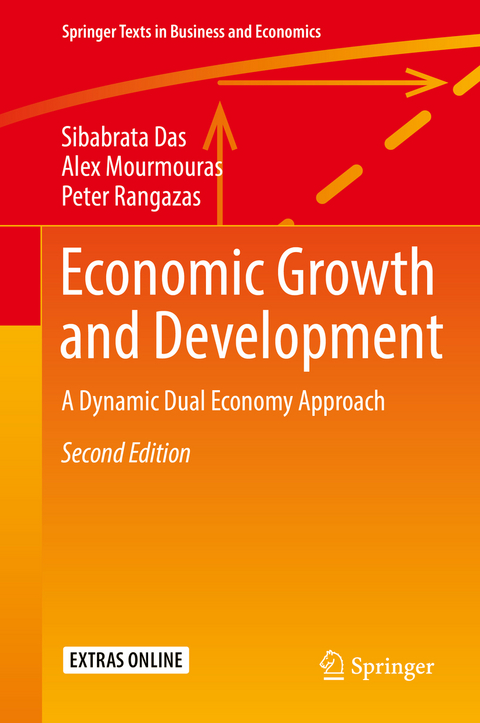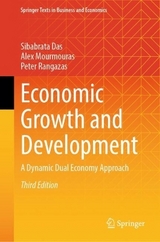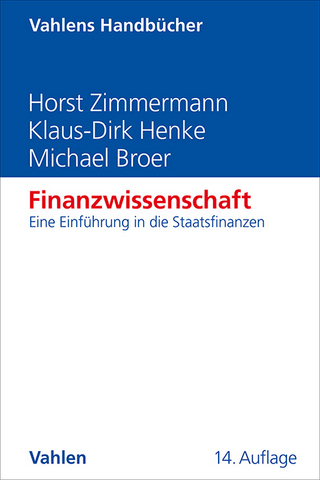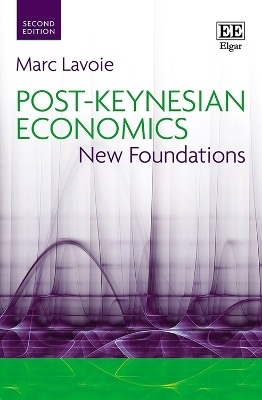
Economic Growth and Development
Springer International Publishing (Verlag)
978-3-319-89754-7 (ISBN)
Peter Rangazas is professor of economics at IUPUI. He regularly publishes in academic economics journals including the American Economic Review, Review of Economics and Statistics, Journal of Monetary Economics, and Journal of Economic Growth. He coauthored a second book in the Springer Texts in Business and Economics series, the Macroeconomics of Corruption. Sibabrata Das has received his Ph. D. in Economics from University of Sussex, U.K.; and M.A. from Johns Hopkins University, U.S.A. Dr. Das has taught graduate courses in statistics, econometrics, microeconomics and development economics, at North Bengal University, Vidyasagar University, and Burdwan University, in India. As a research economist for the Ghana macroeconomic team at the World Bank, he has worked on macroeconomic modeling, and projections for various policy papers and country operations projects. As a member of the country teams, Dr. Das has also actively participated in World Bank-IMF country missions in Ghana, Angola, and Grenada. As a staff member he has contributed to several of the World Bank-IMF publications over the years. Currently, at the International Monetary Fund, he works on various cross-country projects on growth, economic development, and important policy issues across the countries and regions of the world. Alex Mourmouras is division chief in the Asia and Pacific department of the IMF where he has served as mission chief for Vietnam, Singapore and Malaysia. He was previously division chief in the IMF Institute for Capacity Development and economist in the Fund's Policy Development and Review and Fiscal Affairs Departments. Before joining the IMF, Dr. Mourmouras served as assistant and associate professor of Economics and director of graduate studies, all at the University of Cincinnati. He holds a Ph.D in economics from the University of Minnesota and a BA degree from Harvard College.
1. Overview.- Part I. One-Sector Growth Models.- 2. Neoclassical Growth Theory.- 3. Fertility and Schooling.- 4. Government and Growth.- 5. Foreign Aid.- Part II Two-Sector and Dual Economies.- 6. Two Sector Growth Models.- 7. Wage and Fertility Gaps in Dual Economies.- 8. Physical Capital in Dual Economies.- 9. A Complete Dual Economy.- 10. Urbanization.- 11. Conclusion.- 12. Solutions to Exercises.- 13. Technical Appendix.
"Revised and expanded edition of a textbook for advanced undergraduates and graduate students provides an introduction to features of growth theory, explaining how the theory can be blended with historical data and case studies to consider sources of economic prosperity that may be used to help lagging countries prosper." (Journal of Economic Literature, Vol. 59 (1), March, 2021)
| Erscheinungsdatum | 28.06.2018 |
|---|---|
| Reihe/Serie | Springer Texts in Business and Economics |
| Zusatzinfo | X, 356 p. 130 illus. in color. |
| Verlagsort | Cham |
| Sprache | englisch |
| Maße | 155 x 235 mm |
| Gewicht | 692 g |
| Themenwelt | Wirtschaft ► Volkswirtschaftslehre ► Finanzwissenschaft |
| Wirtschaft ► Volkswirtschaftslehre ► Makroökonomie | |
| Schlagworte | dual economy • dynamic • Economic Development • Growth Theory • two-sector model |
| ISBN-10 | 3-319-89754-3 / 3319897543 |
| ISBN-13 | 978-3-319-89754-7 / 9783319897547 |
| Zustand | Neuware |
| Informationen gemäß Produktsicherheitsverordnung (GPSR) | |
| Haben Sie eine Frage zum Produkt? |
aus dem Bereich



